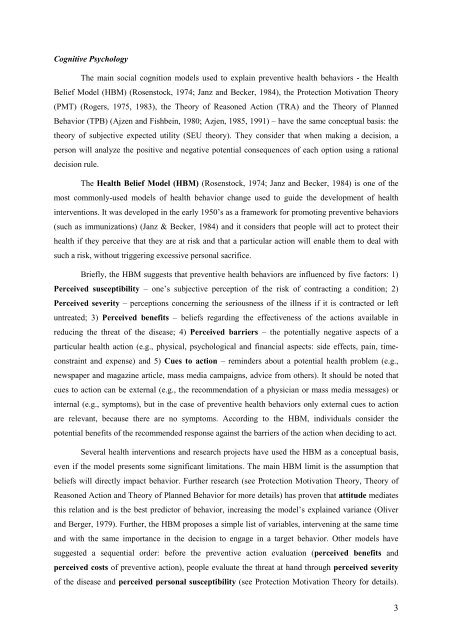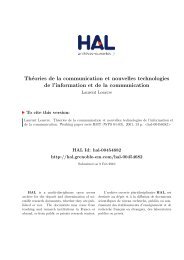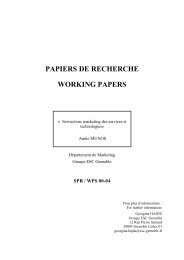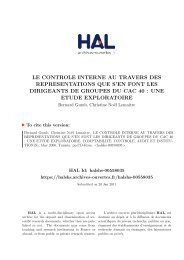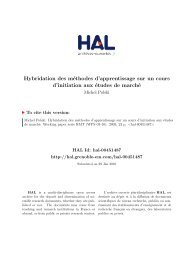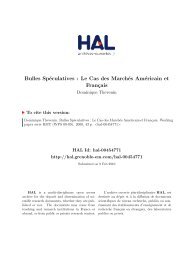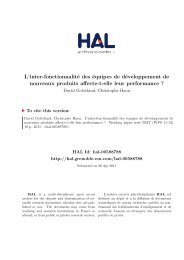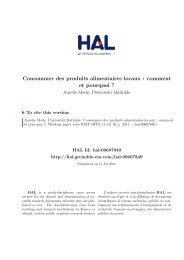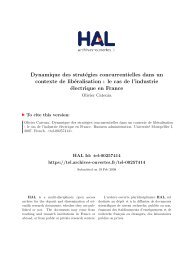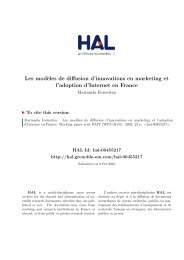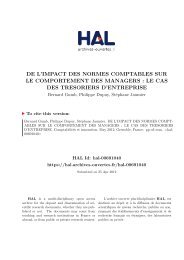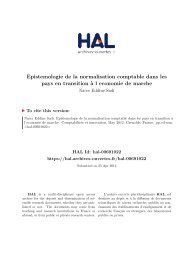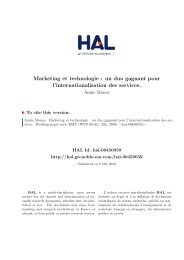The Determinants of Preventive Health Behavior: Literature Review ...
The Determinants of Preventive Health Behavior: Literature Review ...
The Determinants of Preventive Health Behavior: Literature Review ...
Create successful ePaper yourself
Turn your PDF publications into a flip-book with our unique Google optimized e-Paper software.
Cognitive Psychology<br />
<strong>The</strong> main social cognition models used to explain preventive health behaviors - the <strong>Health</strong><br />
Belief Model (HBM) (Rosenstock, 1974; Janz and Becker, 1984), the Protection Motivation <strong>The</strong>ory<br />
(PMT) (Rogers, 1975, 1983), the <strong>The</strong>ory <strong>of</strong> Reasoned Action (TRA) and the <strong>The</strong>ory <strong>of</strong> Planned<br />
<strong>Behavior</strong> (TPB) (Ajzen and Fishbein, 1980; Azjen, 1985, 1991) – have the same conceptual basis: the<br />
theory <strong>of</strong> subjective expected utility (SEU theory). <strong>The</strong>y consider that when making a decision, a<br />
person will analyze the positive and negative potential consequences <strong>of</strong> each option using a rational<br />
decision rule.<br />
<strong>The</strong> <strong>Health</strong> Belief Model (HBM) (Rosenstock, 1974; Janz and Becker, 1984) is one <strong>of</strong> the<br />
most commonly-used models <strong>of</strong> health behavior change used to guide the development <strong>of</strong> health<br />
interventions. It was developed in the early 1950’s as a framework for promoting preventive behaviors<br />
(such as immunizations) (Janz & Becker, 1984) and it considers that people will act to protect their<br />
health if they perceive that they are at risk and that a particular action will enable them to deal with<br />
such a risk, without triggering excessive personal sacrifice.<br />
Briefly, the HBM suggests that preventive health behaviors are influenced by five factors: 1)<br />
Perceived susceptibility – one’s subjective perception <strong>of</strong> the risk <strong>of</strong> contracting a condition; 2)<br />
Perceived severity – perceptions concerning the seriousness <strong>of</strong> the illness if it is contracted or left<br />
untreated; 3) Perceived benefits – beliefs regarding the effectiveness <strong>of</strong> the actions available in<br />
reducing the threat <strong>of</strong> the disease; 4) Perceived barriers – the potentially negative aspects <strong>of</strong> a<br />
particular health action (e.g., physical, psychological and financial aspects: side effects, pain, timeconstraint<br />
and expense) and 5) Cues to action – reminders about a potential health problem (e.g.,<br />
newspaper and magazine article, mass media campaigns, advice from others). It should be noted that<br />
cues to action can be external (e.g., the recommendation <strong>of</strong> a physician or mass media messages) or<br />
internal (e.g., symptoms), but in the case <strong>of</strong> preventive health behaviors only external cues to action<br />
are relevant, because there are no symptoms. According to the HBM, individuals consider the<br />
potential benefits <strong>of</strong> the recommended response against the barriers <strong>of</strong> the action when deciding to act.<br />
Several health interventions and research projects have used the HBM as a conceptual basis,<br />
even if the model presents some significant limitations. <strong>The</strong> main HBM limit is the assumption that<br />
beliefs will directly impact behavior. Further research (see Protection Motivation <strong>The</strong>ory, <strong>The</strong>ory <strong>of</strong><br />
Reasoned Action and <strong>The</strong>ory <strong>of</strong> Planned <strong>Behavior</strong> for more details) has proven that attitude mediates<br />
this relation and is the best predictor <strong>of</strong> behavior, increasing the model’s explained variance (Oliver<br />
and Berger, 1979). Further, the HBM proposes a simple list <strong>of</strong> variables, intervening at the same time<br />
and with the same importance in the decision to engage in a target behavior. Other models have<br />
suggested a sequential order: before the preventive action evaluation (perceived benefits and<br />
perceived costs <strong>of</strong> preventive action), people evaluate the threat at hand through perceived severity<br />
<strong>of</strong> the disease and perceived personal susceptibility (see Protection Motivation <strong>The</strong>ory for details).<br />
3


